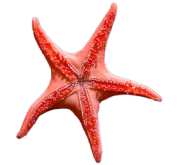Alaska SeaLife Center Studies Elusive Pacific Sleeper Shark July 8, 2019
Researchers at the Alaska SeaLife Center (ASLC) recently captured a small male Pacific sleeper shark for an investigative study on the species.
The Pacific sleeper shark is a close relative of the Greenland shark, which has been found to possibly live for several hundred years. “If findings from recent studies on the Greenland shark transfer to Pacific sleepers, these animals could maybe reach an astonishing age of 200-300 years old,” states Dr. Amy Bishop, ASLC Scientist.
Dr. Markus Horning, ASLC Senior Research Scientist, is leading the study as Principal Investigator, together with Co-Investigators, Dr. Amy Bishop, Richard Hocking, and Jared Guthridge. The ASLC team is working closely with Co-Principal Investigator and shark expert, Dr. Christopher Lowe from California State University at Long Beach. They hope to investigate the ecological importance of these sharks, how their populations are impacted through fishing activities, as well as their predation habits. The Pacific sleeper shark is a large marine predator in Alaskan waters, and evidence from initial tagging work by the Center’s researchers suggests they may be a key predator of juvenile Steller sea lions.
Researchers first began fishing for sharks in 2018 with the intentions of finding specimens under six feet. The goal is to bring up to five young, small sharks to the Center for short periods of time for select studies on their metabolic rates and basic biology. They will then be released back in Resurrection Bay with telemetry tags to monitor their movements. After receiving assurance from local fishing captain, Andy Mezirow, that sleeper sharks could be found right in the Bay, they started pulling a team together to fish regularly. Many methods were used to find a shark, but bait stations placed up to 900 feet down ended up being the most effective technique.
Thirteen sharks were caught that were too big to fit in the metabolic chamber intended for the research study. Those sharks were tagged and released. “Successful sleeper shark captures were rewarding after much trial and error, but we continuously found animals that were too large for our study. We were either going to need a smaller shark or a bigger boat,” notes Dr. Horning. On July 1, 2019, the team found a shark about five feet long that fit perfectly in the transport carrier. Now that the animal is at the Center, Taylor Smith, Lowe’s graduate student at Cal State’s Shark Lab, will be heading the metabolic trials.
Visitors to ASLC may at times be able to see research in action since the shark is in our largest pool, visible from the second floor. Since this is a bottom dwelling shark, a cover needs to be used on the pool when research is inactive to reduce light and regulate temperature. To find out more about the Pacific sleeper shark and to follow this research, the public can read ASLC’s 60Ëš North Science Blog.
Dr. Markus Horning received funding for this project from the North Pacific Research Board (NPRB). The project is permitted by ASLC’s institutional ethics committee (AUP # R19-05-05) and by the Alaska Department of Fish & Game (CF-19-085).


